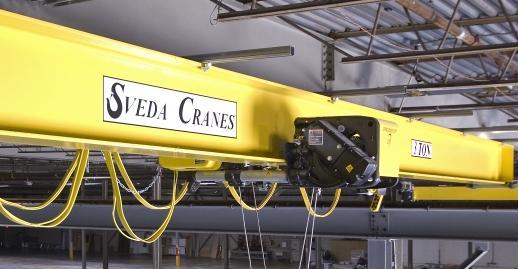
The Necessity of Load Testing
Andrew T. Litecky
Welcome to The Hoist Guy's Blog, where our resident Hoist Guy, Andrew T. Litecky, shares his knowledge and experience of many years in the overhead material handling industry to discuss how important inspections and load testing services are.
Importance of Hoist Inspections & Load Tests
How important is it to load test an existing bridge crane? We recently witnessed an example of the importance of this safety procedure, with a narrowly averted disaster.
Load Testing a PT Monorail & Hoist
Shupper-Brickle was hired to load test an existing patented track horseshoe monorail and hoist system. Its original installation was estimated at 30 or 35 years ago (which is relatively young in the lifecycle of patented track) and located in a non-corrosive environment of a maintenance facility. The load test was ordered by a new contractor on site, and since it passed a visual inspection and functional test, this was only a precautionary formality. There was no indication the track would fail.
Per OSHA and ANSI regulations, we conducted the test at 125% of the load rating, and the monorail crashed to the floor. Thankfully, no one was standing within range or got hurt. A thorough examination of the monorail and anchor points revealed the failure was due to improperly installed concrete “J” bolts (anchor bolts). Had the equipment been used as planned without this load test, it would certainly have caused an accident and possibly a fatal one.
Load Testing Regulations
OSHA and ANSI regulations require a load test under three circumstances:- When the equipment is first commissioned
-
Anytime the system is modified
- Whenever a load-bearing part, such as the load brake, is changed.
We would further suggest load testing a bridge crane or monorail under these circumstances:
- After longs periods when the equipment was not in use
- At regular intervals of moderate use in a corrosive environment
- When a competent person (as defined by OSHA) determines a test is necessary
For all overhead material handling applications, simple preventative measures can minimize risk. Disasters can be avoided by training employees and putting a preventative maintenance plan in place. And, when in doubt, conduct a load test.
Hoist & Crane Inspection & Load Testing Service
Since 1969, Shupper-Brickle Equipment has supplied overhead material handling equipment, parts, and service. We offers load capacity testing of hoists, bridge cranes and monorails to ensure maximum safety for the Mid-Atlantic Region from our New Jersey facility. Our experienced technicians adhere to industry standards and both ASME and OSHA requirements. Contact us for more information on system upgrades and load testing services.


